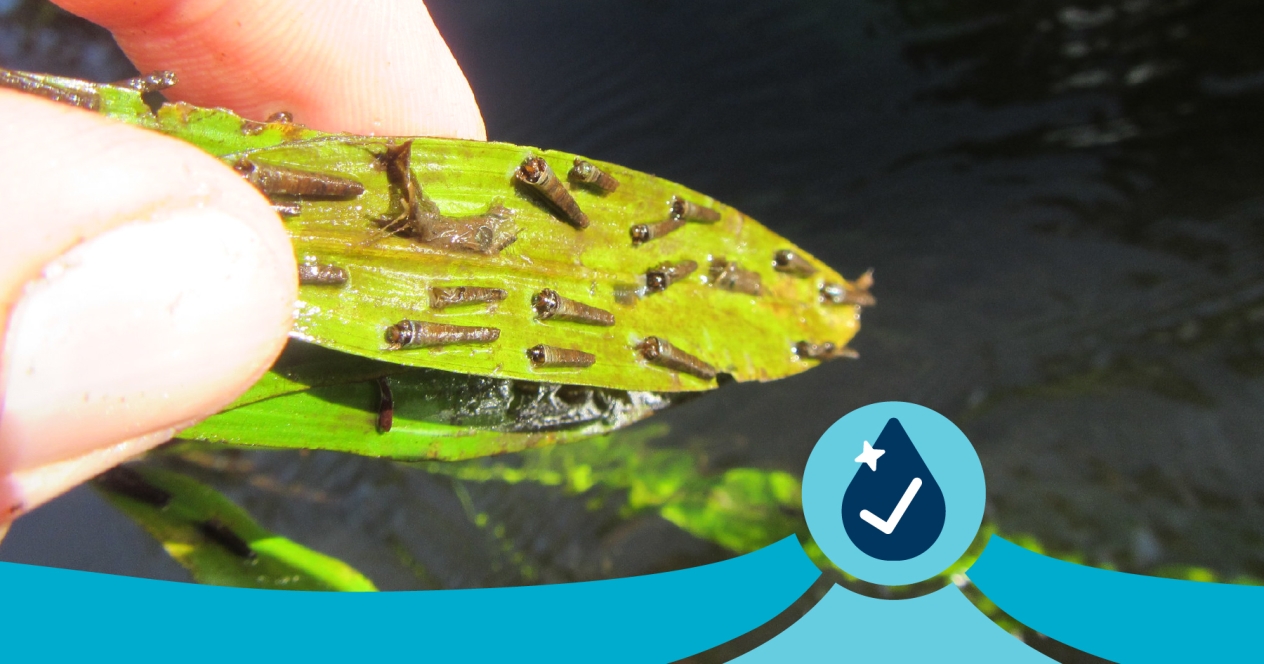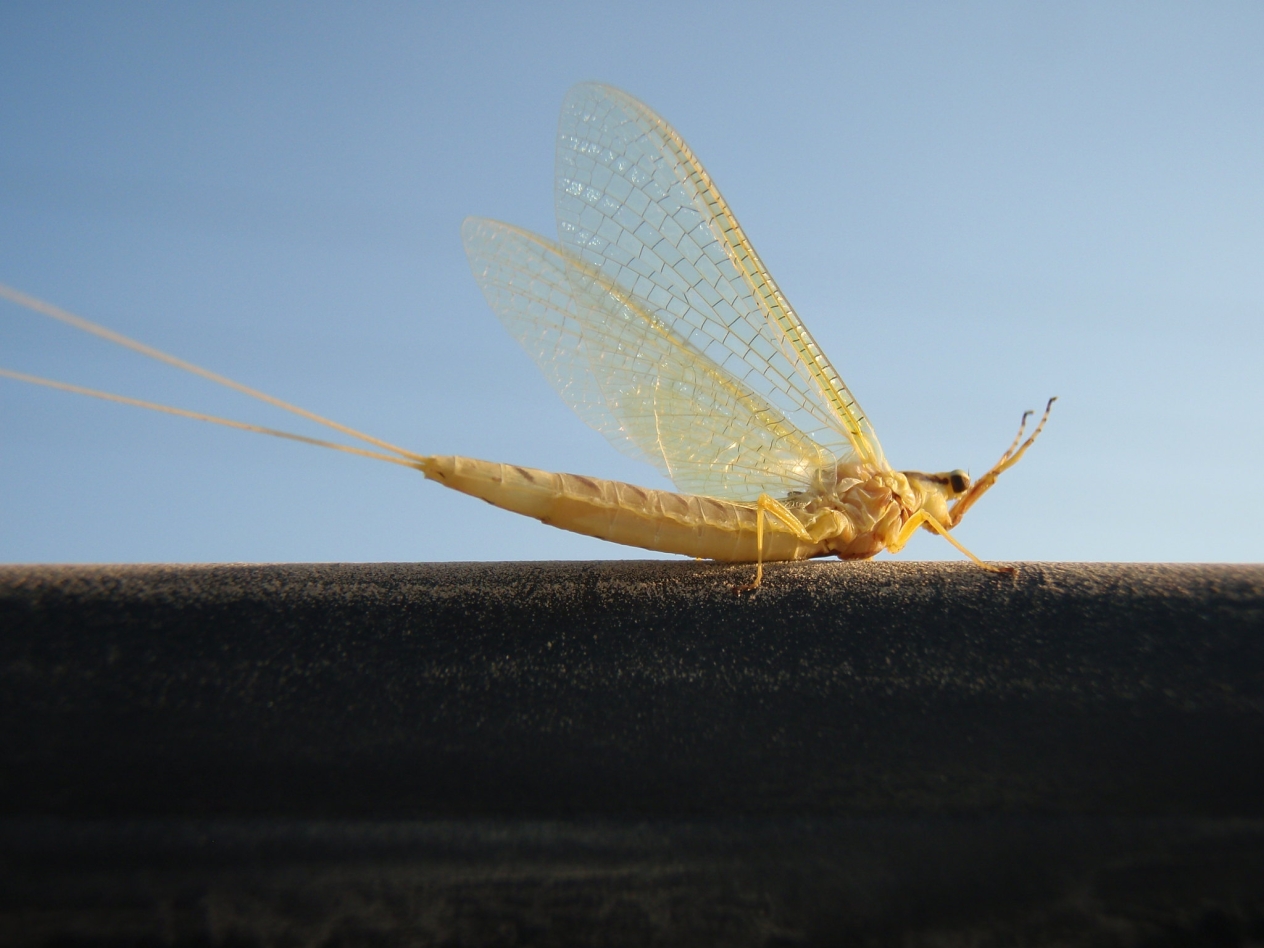
Beaver Creek’s smallest residents, its macroinvertebrates — what most people just call “bugs”— provide big clues about the health of a body of water. After years of MPCA scientists closely monitoring Beaver Creek, these bugs are showing signs that it may be time to remove the creek from the impaired waters list.
The creek was originally placed on the impaired waters list in 2014 for having a biological impairment, meaning scientists were not finding the types of creatures that would indicate a healthy creek.
“There are different criteria from one stream type to another,” said John Genet, a research scientist with the MPCA. “With Beaver Creek, which is a cold stream, what the MPCA found was likely related to not having the right number of cold-water bugs.”
The bugs speak
Through careful monitoring, MPCA scientists observed benthic macroinvertebrates — those that dwell on the bottom of bodies of water — which are especially helpful when assessing the health of a lake, river, or stream.
These bugs live most of their lives in water and provide a more holistic picture of stream conditions over time, so when scientists take a macroinvertebrate sample, they get the most comprehensive look at the condition of a body of water compared to just a water sample.
Different types of bugs can handle varying levels of pollution, so the MPCA categorizes them as “tolerant” or “sensitive.”
Tolerant bugs like snails, leeches, or worms can handle high levels of nutrients, sediment, and low dissolved oxygen, which can be caused by runoff from farmland.
“Essentially, these bugs can tolerate poor conditions, so while they still exist in healthy streams, we see more of these bugs in streams that have more pollution,” says Tiffany Schauls, an environmental specialist with the MPCA.

Conversely, sensitive bugs like caddisflies, stoneflies, and mayflies cannot withstand high levels of pollution. If these bugs are found in a body of water, it indicates a healthy environment.
“It’s best to think about the number of different species we have in the creek, and the proportion of sensitive to tolerant bugs,” Schauls says. “We want diversity, but there isn’t a one-size-fits-all approach. There are different types of rivers and streams, each having its own expectation in terms of the bug community you can find there. For example, we don’t expect the larger, warm-water Mississippi River to have the same bug community as Beaver Creek, which is a small cold-water stream.”
Overall, more diversity often means a healthier stream. The best way to achieve this level of diversity in Beaver Creek is by following land use practices that support healthy local streams and the macroinvertebrates that reside there.
Farming and Beaver Creek
In the 1920s, before sustainable farming practices, the land around the town of Beaver, Minnesota, was farmed in a way that degraded the landscape. Farming on steep valley slopes and flood plains led to significant flooding, causing Beaver to flood multiple times throughout the year. In 1938, the town flooded a total of 28 times. Homes were buried, hills eroded, and 15 feet of sediment covered the landscape. By 1940, residents had to abandon the community. Today, Beaver Creek is still recovering from these deposits.
With the help of the Winona County Soil and Water Conservation District, landowners have implemented several land management practices that prevent soil erosion and ultimately limit excess nutrients and sediment from flowing into waterbodies. The steep topography and karst landscape mean water and pollutants can flow through the watershed very rapidly.
“We can prevent unwanted nutrients in streams by utilizing storage structures for manure and push up ponds, which stabilize the flow of water when it rains,” explains Amanda Gentry of the Winona County Soil and Water Conservation District.
Over the last few years, reducing the number of feedlots on the land and retiring land that may not be productive due to its rocky, shallow soil has kept sediment from flowing into lakes, rivers, and streams. Planting native vegetation outside of the usual crop growing season also helps to hold soil down.
“Small watersheds like ours have been able to see those improvements, and it’s from local landowners just making small changes and doing their part,” Gentry says.
According to Gentry, these land management practices are an investment for landowners to retain their rich topsoil and keep their local bodies of water healthy.
Gentry has witnessed firsthand how Beaver Creek has improved throughout the years. Gentry has gone from standing knee deep in silt to catching sensitive bugs in her dip net when out monitoring for trout.
“I think it’s pretty awesome to hear about a proposed delisting,” Gentry says. “That Beaver Creek area has gone from depositing feet of sediment in the valley to being delisted for having a healthy macroinvertebrate population is amazing.”
After 10 years of careful monitoring and small changes to land management, Beaver Creek’s bugs are giving the indication their home is starting to thrive once again.
